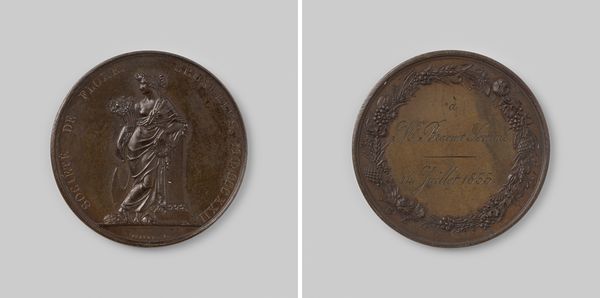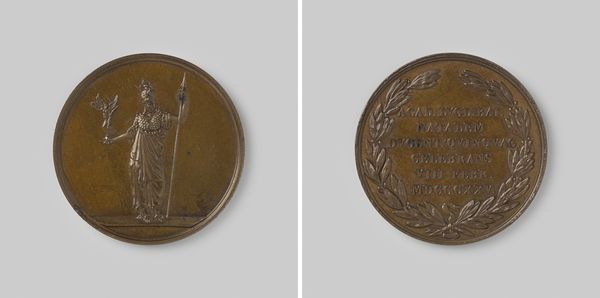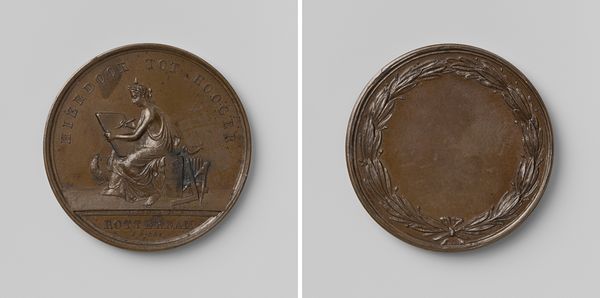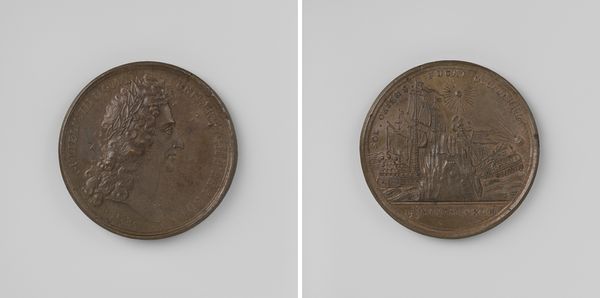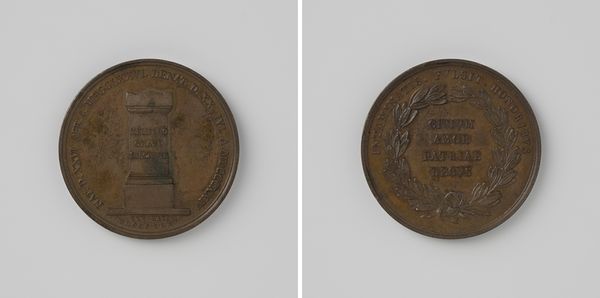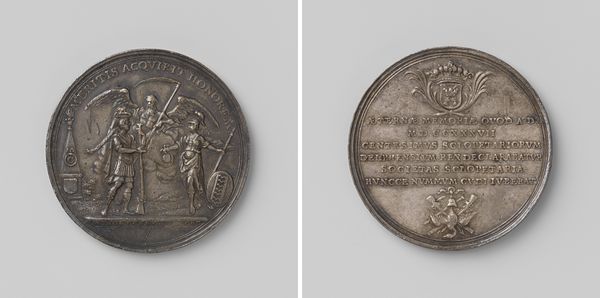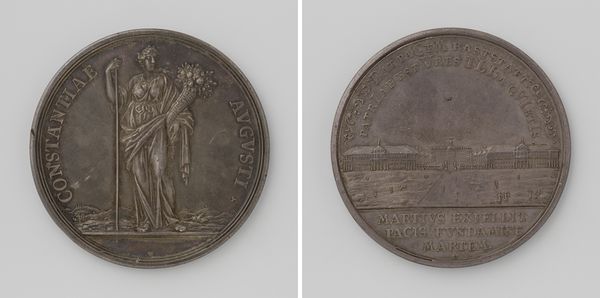
Tentoonstelling in de Planten- en Dierentuin te Batavia 1885 1885
0:00
0:00
davidvander18041879kellen
Rijksmuseum
metal, relief, bronze, sculpture, engraving
#
metal
#
sculpture
#
relief
#
bronze
#
sculpture
#
history-painting
#
engraving
Dimensions: diameter 4.0 cm, weight 30.72 gr
Copyright: Rijks Museum: Open Domain
Editor: So this is a bronze relief made by David van der Kellen, titled "Exhibition in the Plant and Zoo in Batavia 1885". It has this classical-looking figure on one side with palms in the background and on the other side it’s got this inscription with a laurel wreath surrounding it. It feels like it's trying to commemorate something grand and important, but I’m curious, what’s your interpretation? Curator: That "classical-looking figure," as you call it, is a key element. Notice her placement within a colonial landscape. She presents a wreath. Ask yourself: Who is she bestowing this honour upon? And, more importantly, *why*? The 1880s were a pivotal period for the Dutch colonial project in the East Indies, with exhibitions such as these designed to display the supposed "fruits" of their civilizing mission. Editor: So, the medal itself becomes a form of propaganda, an object that not only celebrates a zoo and botanical garden but also indirectly promotes colonialism itself. It's kind of unsettling, how these exhibitions would exoticize both plants and people for the entertainment of Europeans, right? Curator: Precisely. The very act of memorializing this event through a medal underscores its perceived importance to the colonial administration. The medal becomes a symbol of power dynamics. Who gets to create and control narratives and for what purpose? Even the composition of the artwork serves the narrative of a benevolent colonial presence improving on the "unruly" tropical landscape. Editor: I see, it's like the artwork is trying to justify colonial activity by presenting this idealized image of progress and success. I guess what seems like a simple commemorative object turns out to be a pretty loaded cultural artifact! Curator: Indeed. Reflecting on the narratives such objects perpetuated is vital for critically engaging with the historical underpinnings of our own institutions and cultural values. Editor: Absolutely, I'll never look at these kinds of historical objects in the same way again. Thank you.
Comments
No comments
Be the first to comment and join the conversation on the ultimate creative platform.
